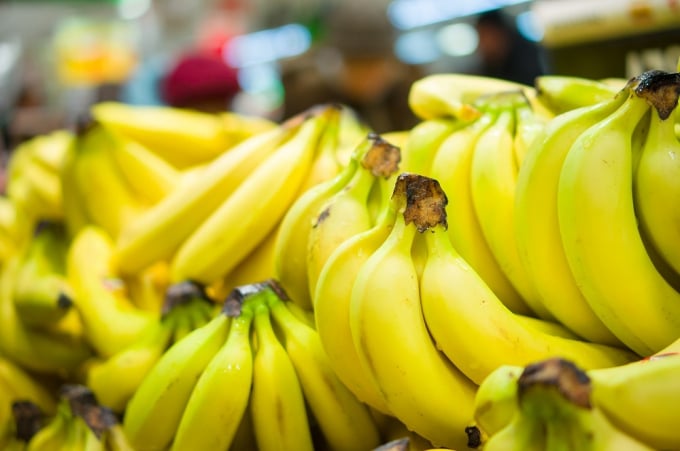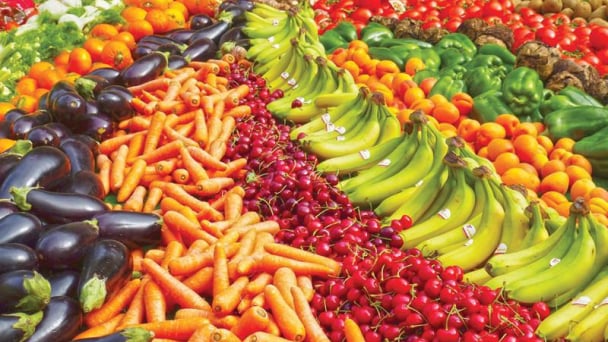May 21, 2025 | 05:00 GMT +7
May 21, 2025 | 05:00 GMT +7
Hotline: 0913.378.918
May 21, 2025 | 05:00 GMT +7
Hotline: 0913.378.918

Bananas Philippines is reducing market share in China as they face competition from Vietnamese and Cambodian bananas
According to the Pilipino Banana Growers and Exporters Association (PBGEA), the Philippines’ banana exports to China are facing more difficulties in the transportation and distribution process due to the effects of Covid-19.
On account of the Covid-19 pandemic, the transportation cost of Philippine bananas for exports has increased by 15-20% this year, while transit times have increased from an average of 25 days to an average of 30-33 days. The increase in costs caused the profit from the country's banana exports to decrease by 15%.
Japan remains as Philippines' largest banana export market in terms of export value, but China is the largest market in terms of volume. Bananas are currently the sixth most important export product in the Philippines. The Philippine banana export turnover in 2020 is only US$ 1.55 billion, down 20.6% compared to 2019.
In 2020, the Philippines exported 3.6 million tons of bananas, a decrease of 808,000 tons compared to 2019. In addition to the Covid-19 epidemic, the Panama wilt disease has also significantly impacted the Philippine banana exports in the past year.
In China, the largest market of the Philippine banana industry (in terms of volume), the Philippine bananas are being strongly competed by bananas from many other countries in the region, especially bananas from Vietnam and Cambodia.
In 2019, China imported 1.94 million tons of bananas, in which the quantity of bananas imported from the Philippines was 1.033 million tons, 278 thousand tons were from Vietnam and more than 17 thousand tons were from Cambodia.
In 2020, out of a total of 1,747 million tons of bananas imported into China, bananas from the Philippines fell sharply to 795 thousand tons, while Vietnamese bananas increased at the 283 thousand tons mark and Cambodian bananas increased at 241 thousand tons. Thus, it can be seen that Vietnam and Cambodia bananas are gradually occupying the market share of Philippine bananas in China.

Banana processing before export packaging in Binh Duong, Vietnam
Earlier this year, the Philippines' banana exports continued to decrease. In January 2021, the Philippines' banana exports only reached 186,000 tons, worth US$ 85 million, down 51% in volume and 47% in value. According to PBGEA, the sharp decline in the volume and value of Philippine banana exports is causing concerns for the country's banana growers.
As stated by Mr. Xia Zuxiang, President of Shanghai Sofia International Trade Co., Ltd (China), the Covid-19 outbreak in the Philippines caused many small-scale banana farms to struggle to cope due to lack of resources, thereby affecting the quality of bananas. Therefore, Chinese importers had to reduce orders from the Philippines.
In accordance with Mr. Xia Zuxiang, not only the Philippines but the market share of South American bananas in China is also declining sharply due to the disadvantage of shipping compared to Southeast Asian bananas. The bananas from Southeast Asia imported to China in the first months of this year were mostly from Vietnam and Cambodia thanks to the stable supply. Vietnamese bananas mainly go to the southern provinces of China, while Cambodian bananas go to the northern provinces.
The global market for bananas, one of the most popular fruit on the planet, has experienced a number of shocks: information is spreading in many countries’ media about imminent complete disappearance of bananas, and their prices are high everywhere, according to EastFruit.
The average price of bananas jumped the most in Russia – one and a half times, and now they are sold on the Russian wholesale market at $ 1.44/kg average. At the same time, only in the Central Asia, where prices are traditionally high due to its logistical remoteness, bananas are more expensive than in the Russian Federation. Bananas are now offered on average at $ 1.57/kg and $ 1.99/kg in Tajikistan and Uzbekistan, respectively.
Translated by Samuel Pham

(VAN) Oliyar, a prominent Ukrainian oil and fat manufacturer, has revealed plans to build a farm for 2.3 million laying hens in the Lviv region. The additional production quantities promise to change the competitive landscape of the egg market of the Eastern Europe region.

(VAN) On May 15, Ministry of Agriculture and Environment of Vietnam hosted the 'Connecting Vietnam - Germany agricultural, forestry and fishery trade' seminar in Berlin, Germany.

(VAN) In the face of counterfeit and imitation products, Khanh Hoa Salanganes Nest Company hopes for the prompt completion of the legal framework, strict enforcement against violations, and protection of the bird’s nest brand.

(VAN) Japan's efforts to lower the price of rice through the release of its stockpile may finally be making some progress, albeit at a snail's pace.

(VAN) U.S. tariffs are not only a 'shock', but also an opportunity for Vietnamese businesses to renew their mindset toward comprehensive development.

(VAN) As Bac Giang lychee enters the harvest season, Minister Do Duc Duy expects that the fruit will contribute greatly to agricultural exports due to standardized production and deep processing.

(VAN) Consumers have shown a preference for free-range eggs, but those farming systems are more vulnerable to biosecurity risks like bird flu.